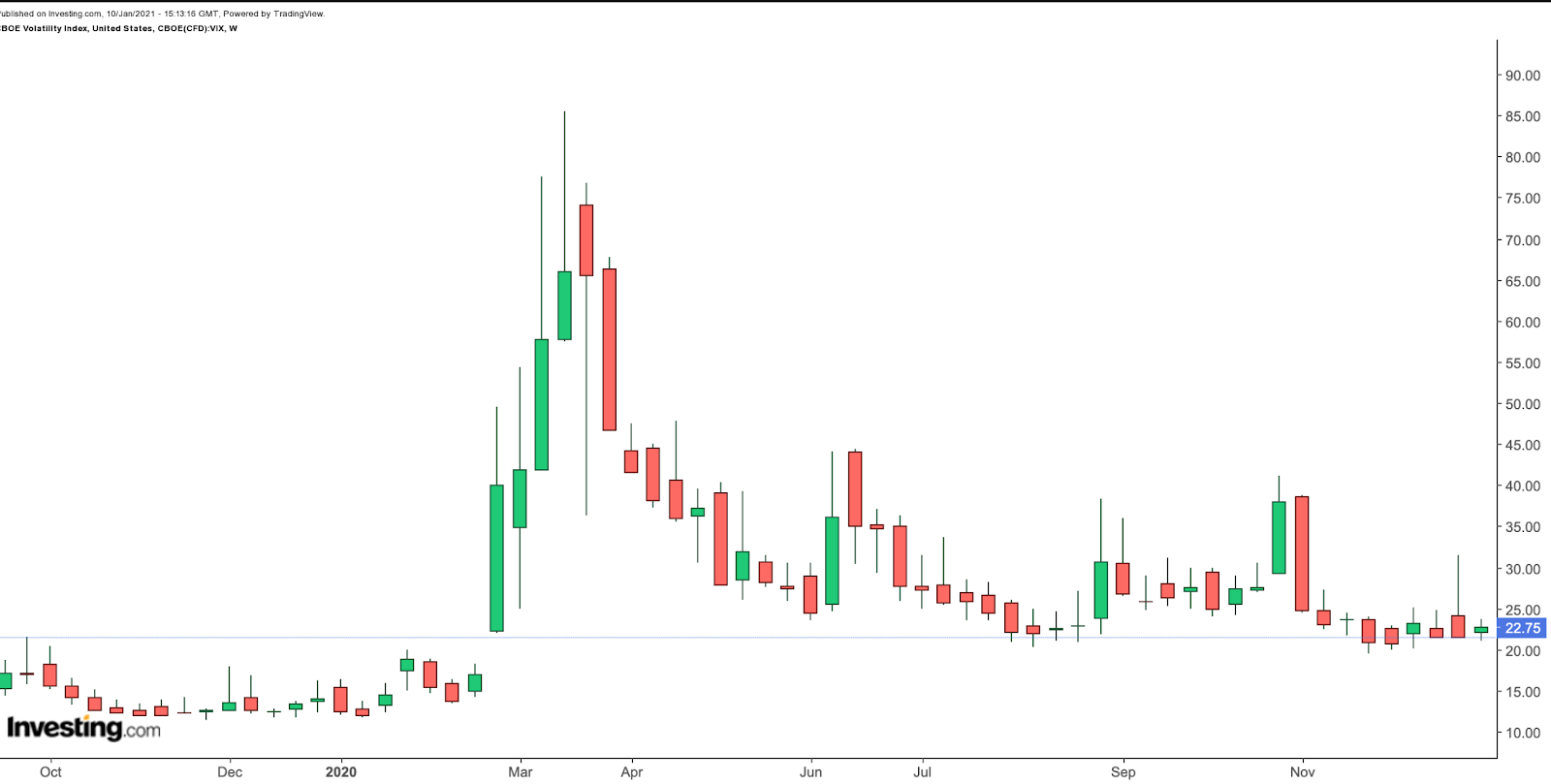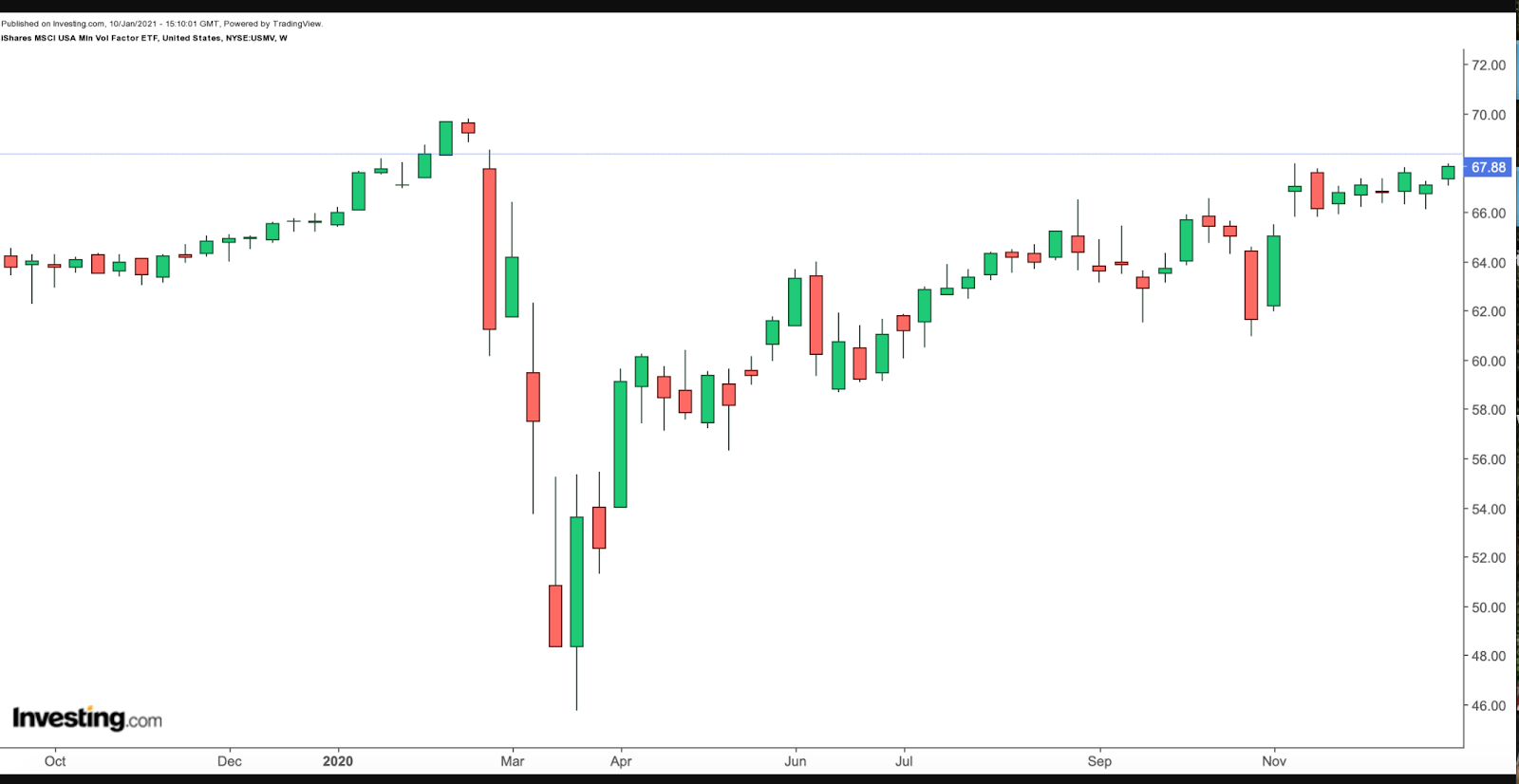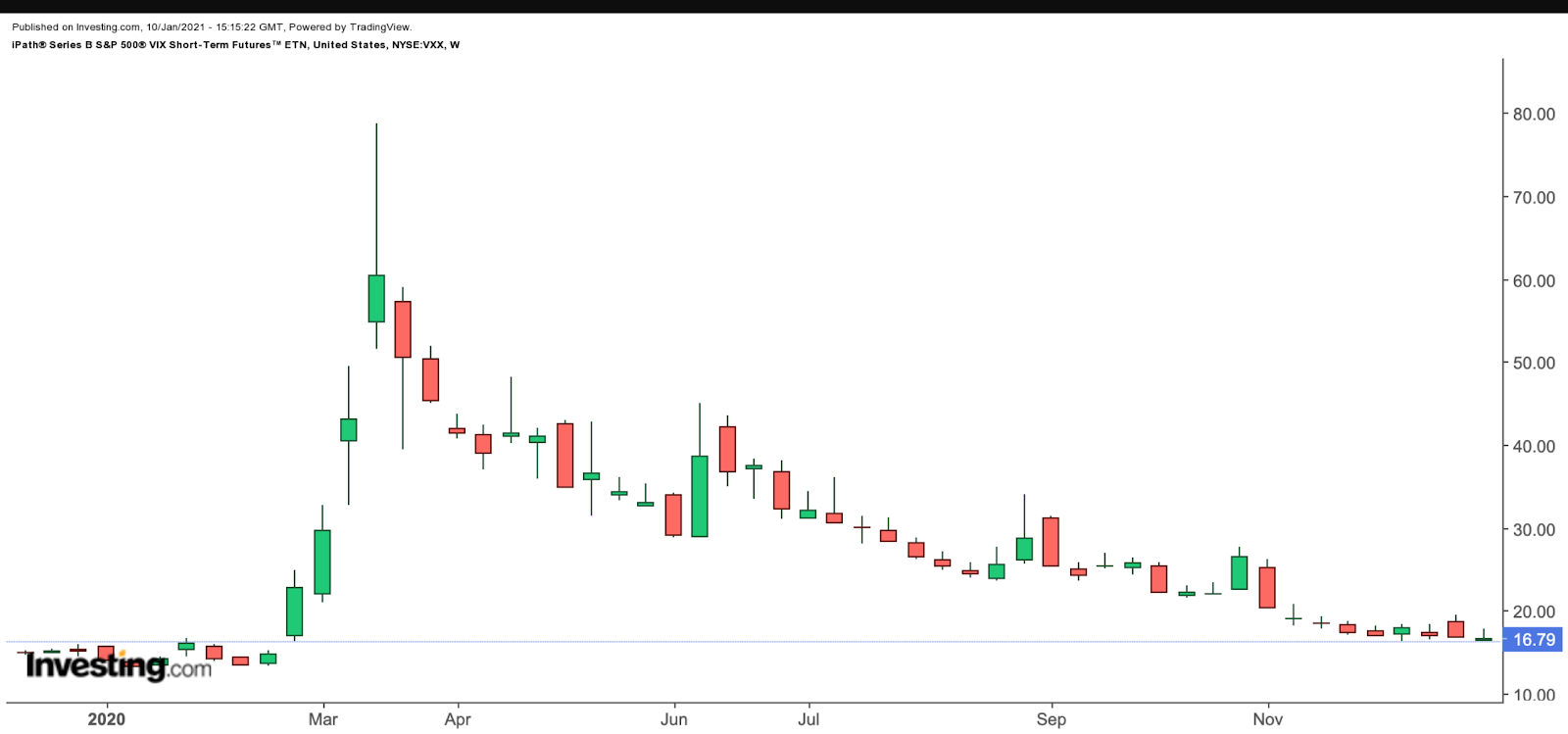Another earnings season is here. The financial sector typically gets the most attention in the first days of quarterly reporting. Yet, many other closely-followed companies in other sectors report this week as well.
They include Abbott Laboratories (NYSE:ABT), BlackRock (NYSE:BLK), Carnival (NYSE:CCL) (NYSE:CUK), Citigroup (NYSE:C), Delta Air Lines (NYSE:DAL), JPMorgan Chase (NYSE:JPM) and Wells Fargo (NYSE:WFC).
Seasoned investors would know the release of quarterly metrics often brings volatility spikes in broader markets. Therefore, we are soon likely to see an increased interest in the CBOE Volatility Index, the most widely-followed benchmark for US stock market volatility.
Since late October, the index has been declining and is now hovering at 21.5. Yet, levels could easily pick up again in the coming days. It is not easy to know if investors will be excited about what the companies have to say in the next few weeks.
Navigating periods of increased volatility can be unnerving for some investors. Diversification is one of the tools to manage risk when volatility increases. Today, we will introduce two exchange-traded funds (ETFs) that could appeal readers.
1. iShares MSCI USA Min Vol Factor ETF
- Current price: $67.88
- 52-week range: $45.75 - $69.79
- Dividend yield: 1.8%
- Expense ratio: 0.15%
The iShares MSCI USA Min Vol Factor ETF (NYSE:USMV) gives access to US securities that are expected to be less volatile than the broader market.
USMC, which tracks the MSCI USA Minimum Volatility (USD) Index, has 185 holdings. Since its inception in October 2011, net assets under management have grown to $33.3 billion.
Information technology currently has the highest sectoral weighting (23.57%), followed by health care (19.44%), consumer staples (11.03%), communication (9.50%), financials (8.78%) and utilities (7.47%). About 15% of the funds are in the top ten names. No stock has more than a weighting of 1.6%. Put another way, changes in the price of a given share would not have a material impact on the fund.
Health care groups Johnson & Johnson (NYSE:JNJ), Vertex Pharmaceuticals (NASDAQ:VRTX) and Merck (NYSE:MRK), global miner Newmont (NYSE:NEM), clean energy business NextEra Energy (NYSE:NEE), and wireless service giant T-Mobile US (NASDAQ:TMUS) lead the businesses in the fund.
Over the past 52 weeks, USMV has returned close to 4%. The current price supports a dividend yield of 1.8%. Trailing P/E and P/B ratios stand at 25.39 and 4.35.
The fund's beta of 0.75 would mean that the fund is less volatile than the S&P 500 index, whose beta is by definition 1. We should note that the beta of a company or fund does not necessarily say much about its fundamentals. The best use of beta is also a matter of debate among scholars and analysts. However, it would be a safe generalization to say that a low-beta stock or fund typically has less risk but also lower returns.
2. iPath S&P 500 VIX Short-Term Futures ETN
- Current value: $16.79
- 52-week range: $13.15 - $78.84
- Expense ratio: 0.89%
Our next discussion centers around an exchange-traded note (ETN), namely the iPath S&P 500® VIX Short-Term Futures ETN (NYSE:VXX). We covered various characteristics}} of ETNs in an earlier article and noted that they are unsecured debt obligations, typically issued by banks.
VXX, issued by Barclays, gives exposure to the {{969238|S&P 500 Vix Short Term Futures Index Total Return.
The index tracks the value of the near-term futures contracts on the VIX index. We should note that VXX aims to achieve a daily return that matches the daily change in short-term futures contracts tracking the VIX.
A closer study of VXX shows that its value typically decreases when stocks rise on a given trading day. As the relationship is inverse, VXX may be an appropriate hedge for short-term traders who are bearish on equities.
Like other volatility exchange-traded products, VXX is designed for replicating daily returns. Therefore, it is not likely to be suitable as a long-term buy-and-hold product.
The daily rebalancing of the index means when the ETN is held for more than one trading session, both the positive and the negative returns are likely to be compounded. Thus, such ETNs should only be used by experienced short-term traders.
